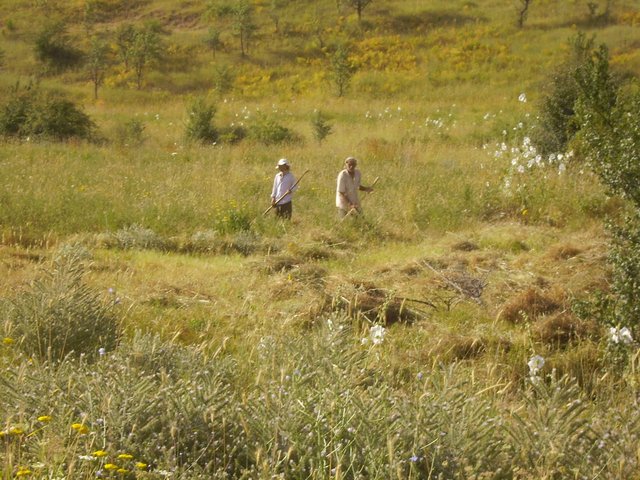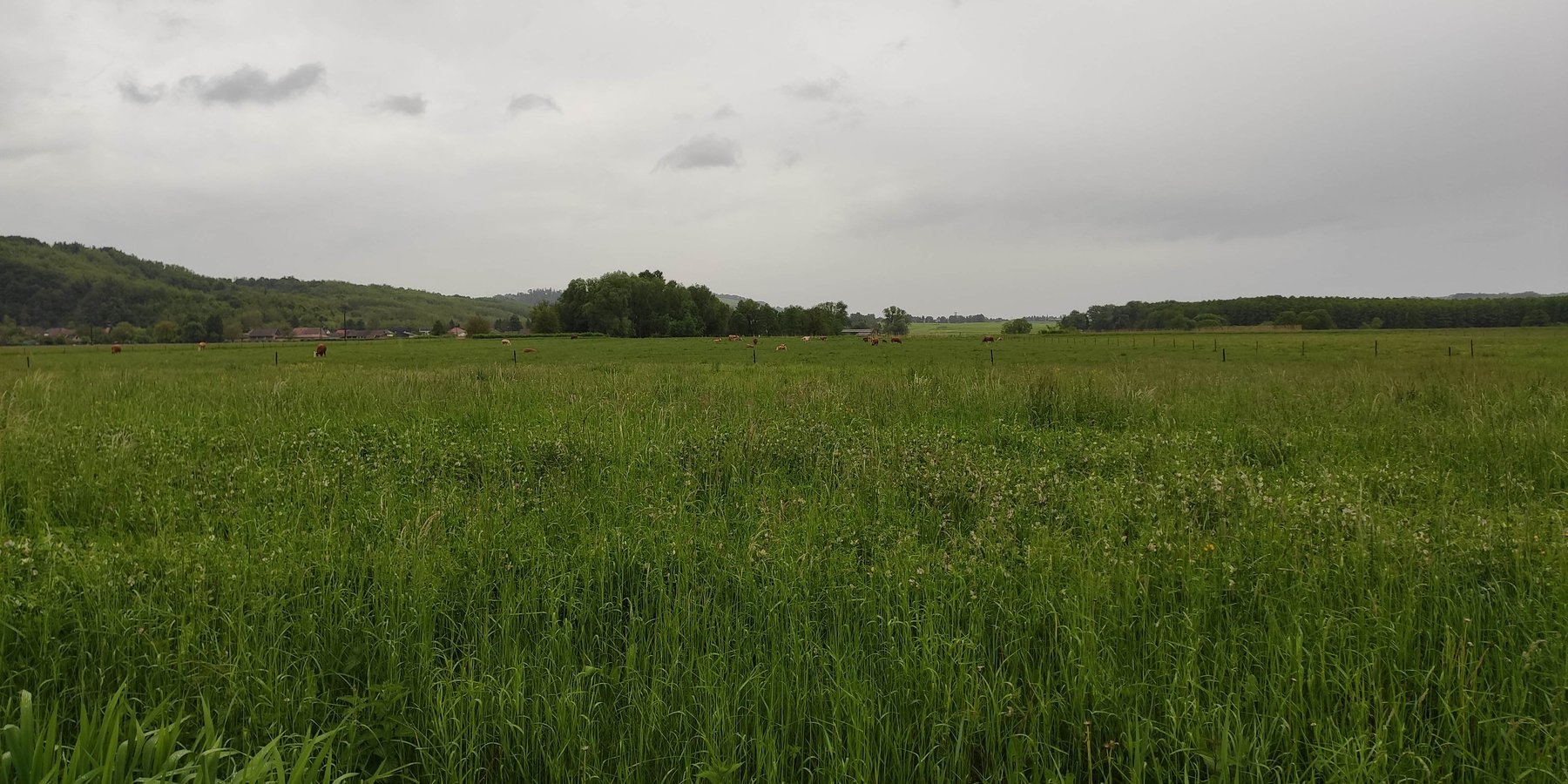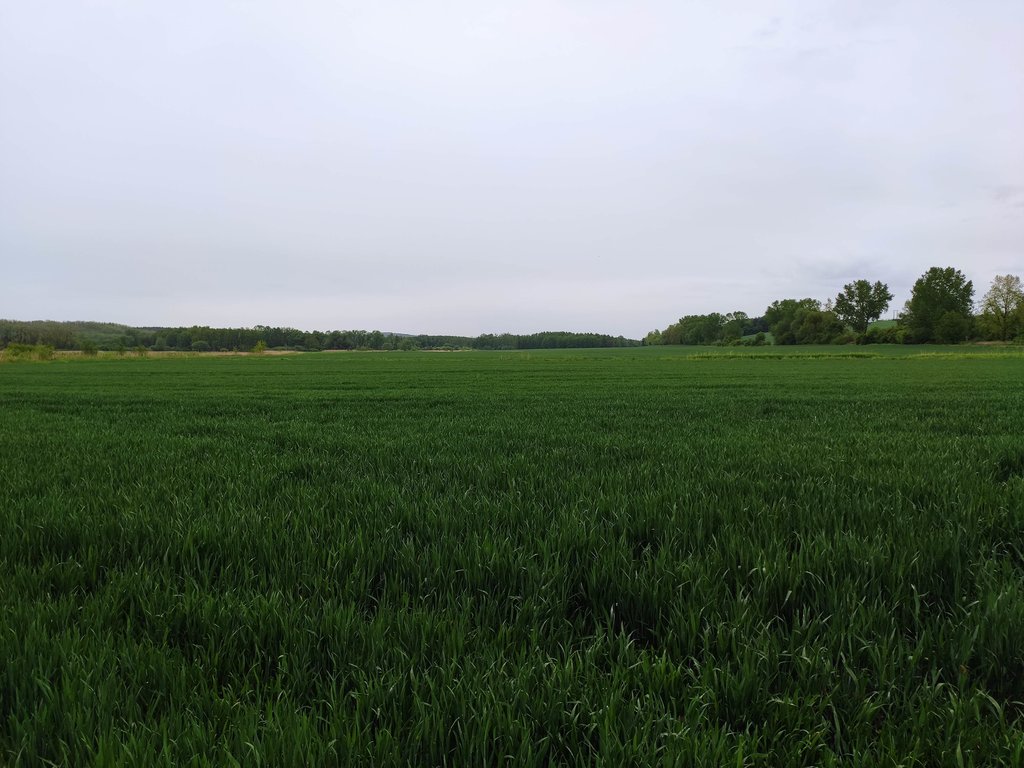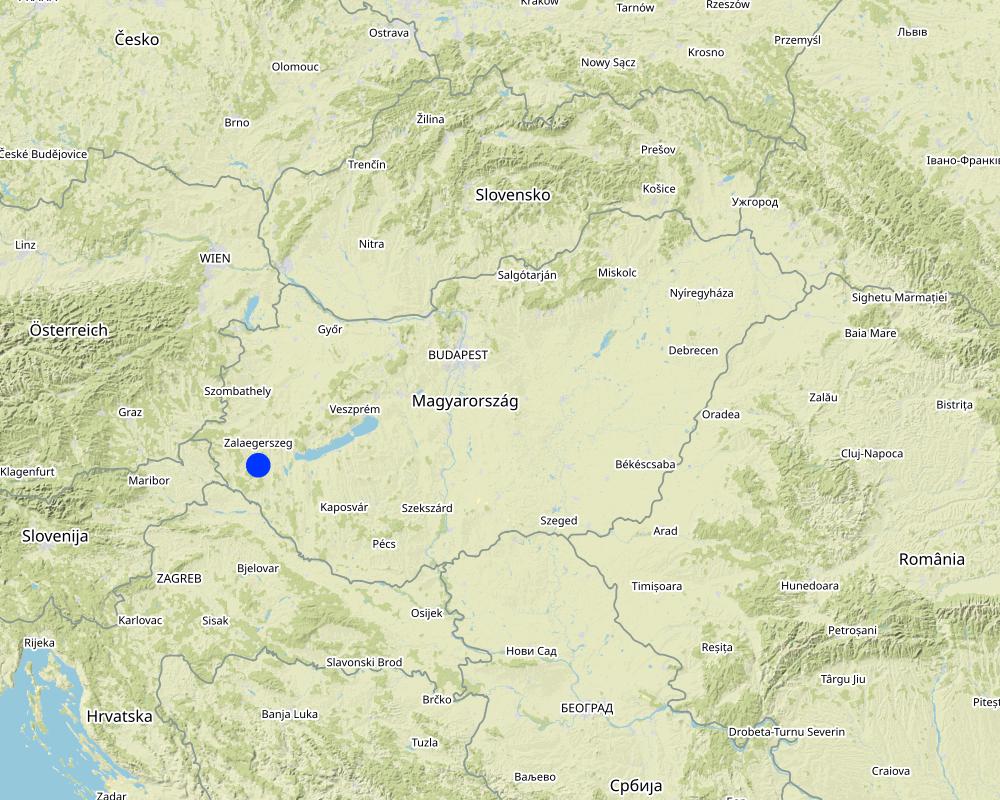Meadows and pastures [匈牙利]
- 创建:
- 更新:
- 编制者: Brigitta Szabó
- 编辑者: Piroska Kassai, Zoltan Toth
- 审查者: William Critchley, Rima Mekdaschi Studer
Rétek és legelők
technologies_6195 - 匈牙利
查看章节
全部展开 全部收起1. 一般信息
1.2 参与该技术评估和文件编制的资源人员和机构的联系方式
有助于对技术进行记录/评估的项目名称(如相关)
OPtimal strategies to retAIN and re-use water and nutrients in small agricultural catchments across different soil-climatic regions in Europe (OPTAIN)有助于对技术进行记录/评估的机构名称(如相关)
Institute for Soil Sciences, Centre for Agricultural Research (ATK TAKI) - 匈牙利1.3 关于使用通过WOCAT记录的数据的条件
编制者和关键资源人员接受有关使用通过WOCAT记录数据的条件。:
是
1.4 所述技术的可持续性声明
这里所描述的技术在土地退化方面是否存在问题,导致无法被认为是一种可持续的土地管理技术?:
否
注释:
Permanent grass is more suitable for conserving soil than arable cropping
1.5 参考关于SLM方法(使用WOCAT记录的SLM方法)的调查问卷

Sustainable livestock and pasture management [塔吉克斯坦]
Sustainable livestock and pasture management is implemented through creating Pasture Users Unions (PUU) which design and implement pasture and livestock management plans.
- 编制者: Kamolidin Abdulloev
2. SLM技术的说明
2.1 技术简介
技术定义:
Permanent meadows or pastures are more effective in controlling land degradation than arable cropping. They are especially appropriate in hilly regions on sloping land where the risk of water erosion is high.
2.2 技术的详细说明
说明:
Permanent meadows and pastures are more effective in controlling land degradation than arable cropping. They are especially appropriate in hilly regions on sloping land where the risk of water erosion is high. This is a relevant technology also for valley floors where there is a regular inflow of water – resulting in sediment accumulation. Such grass cover has relevance also in plantations on sloping land.
There are some differences between pastures and meadows especially in their vegetation and land use. In general, meadows have a variety of natural growing plant species while pastures are often planted with specific types of grasses. Pastures are generally used for grazing animals while meadows are often mowed or harvested for hay (that is also often used for animal feed). Meadows may also be situated along streams or rivers on lowland areas, while pastures are typically situated on hilly regions.
Some of the most common grass species in Hungarian meadows are: meadow fescue (Festuca pratensis), smooth meadow-grass (Poa pratensis), and meadow foxtail (Alopecurus pratensis). Wildflowers (e.g Oxeye daisy, Field scabious) are also often growing on natural meadows in Hungary. On pastures the most common grass species are: ryegrass (Lolium perenne), tall fescue (Festuca arundinacea), and meadow fescue (Festuca pratensis). Hungarian pastures may also include legumes, such as red clover (Trifolium pratense) or white clover (Trifolium repens), which can help fix nitrogen in the soil and improve forage quality for grazing animals.
In the case of pastures farmers generally use a rotational grazing system, where the pasture is divided into sections and animals are periodically moved between them. Properly timed resting periods and regular rotation of pastures are essential for protecting the soil from erosion, promoting plant growth and nutrient uptake, and ensuring the long-term health and productivity of the pastures.
The main purpose of the technology (meadow and pasture land use) is to provide feed for livestock while reducing soil erosion and improving trafficability. The main conservation benefits are protection of the soil surface against transportation of particles by water or wind, thus avoiding soil loss and sedimentation. Due to lower velocity of surface runoff, more time is provided for infiltration of water into the soil, resulting in better water retention. In terms of production, meadows and pastures are predominantly used for providing hay or grazing land for ruminants. Different animals graze land differently, so the risk of soil degradation is lower in the case of cattle (which leave taller grass) and higher in case of sheep (which graze down to the soil surface), while in case of goats or pigs, the soil surface is easily damaged. In some special cases the main purpose of grass cover is simply soil conservation (very steep slopes, gully, etc.).
A significant proportion of grasslands (meadows and pastures) in Hungary are permanent, and they play an important role in agricultural production and the preservation of rural landscapes in the country. The common rules regarding the temporary or permanent use of agricultural land for this purposes (pasture or meadow) are contained in the Act CXXIX of 2007. The request for a land use change can be submitted at the local land offices. The most important requirement for land use change is that it must not result in a decrease in the total area of arable land below the minimum threshold set by the authorities and must not result in a decrease in the ecological value of the land. The conversion must be approved by the authorities and the appropriate land use permit must be obtained.
The application trend of this technology/solution is significantly depends on the situation of livestock production of a country. In Hungary, animal husbandry can be mentioned as the driving force of agriculture in the 1980s, with a share of 55-60% of its production value. However, by the end of the 1990s, this proportion had reversed and crop production had predominated. As there is no need for further pastures due to the decrease in livestock population, in recent times this type of land use change is not very common in Hungary.
2.3 技术照片
2.4 技术视频
注释、简短说明:
video is not available
2.5 已应用该技术的、本评估所涵盖的国家/地区/地点
国家:
匈牙利
区域/州/省:
Zala County
有关地点的进一步说明:
The case study area is situated within the Balaton Catchment Area in the western Hungary. The climate is moderately warm, moderately humid, the number of sunshine hours per year are high. Mean annual temperature of the region of the Lake Balaton is about 10 ˚C. The average amount of rainfall (600-700 mm / year) nationally means a medium rainfall zone. The Balaton Catchment area is 5765 km2. The main environmental purpose is to reduce pollutant (phosphorus and other plant nutrients) loads of Lake Balaton, where anthropogenic eutrophication is the main issue of environmental concern. Lake Balaton, with its nearly 600 sqkm area, is the largest shallow lake in Middle Europe. The lake as well as the surrounding area form very important natural (ecological, water and landscape) resources and are one of the major target areas of water related recreational tourism in Europe as a whole. 37% of the total catchment area is arable land which is much lower than the national average, 27% is forest, which exceeds the national average. 15% of the land suitable for grassland management, 5% is horticulture, 3% is pomiculture, 2% is viticulture, 1% is reed management and fish farming. The „Kis-Balaton” nature conservation area situated within the Balaton Catchment area. The „Kis-Balaton” wetland is under protection of the Ramsar Convention habitat.
具体说明该技术的分布:
- 适用于特定场所/集中在较小区域
技术现场是否位于永久保护区?:
否
Map
×2.6 实施日期
如果不知道确切的年份,请说明大概的日期:
- 10-50年前
2.7 技术介绍
- Upon the initiative of the land user
3. SLM技术的分类
3.1 该技术的主要目的
- 减少、预防、恢复土地退化
- 保护生态系统
- 结合其他技术保护流域/下游区域
- 降低灾害风险
- 减缓气候变化及其影响
3.2 应用该技术的当前土地利用类型
同一土地单元内混合使用的土地::
否

农田
- 一年一作
年作 - 具体指明作物:
- 谷类 - 大麦
- 谷物类 - 玉米
- 谷类 - 小麦(冬季)
- 油料作物 - 向日葵、菜籽、其他
每年的生长季节数:
- 1
采用间作制度了吗?:
是
如果是,说明哪些作物是间作的:
cover crops are grown between cash crops
采用轮作制度了吗?:
是
如果是,请具体说明:
oilseed rape - winter weet - maize - spring barley
3.3 由于技术的实施,土地使用是否发生了变化?
由于技术的实施,土地使用是否发生了变化?:
- 是(请在技术实施前填写以下有关土地利用的问题)
同一土地单元内混合使用的土地::
否

牧场
粗放式放牧:
- 经营牧场
动物类型:
- 牛 - 非奶牛牛肉
是否实行作物与牲畜的综合管理?:
否
产品和服务:
- 肉类
品种:
牛 - 非奶牛牛肉
3.4 供水
该技术所应用土地的供水:
- 雨养
3.5 该技术所属的SLM组
- 畜牧业和牧场管理
3.6 包含该技术的可持续土地管理措施

农艺措施
- A1:植被和土壤覆盖层
3.7 该技术强调的主要土地退化类型

土壤水蚀
- Wt:表土流失/地表侵蚀
- Wg:冲沟侵蚀/沟蚀
3.8 防止、减少或恢复土地退化
具体数量名该技术与土地退化有关的目标:
- 防止土地退化
- 修复/恢复严重退化的土地
4. 技术规范、实施活动、投入和成本
4.1 该技术的技术图纸
技术规范(与技术图纸相关):
Establishment of grassland needs proper soil preparation before sowing. After arable land use weed control is very important on the stubble of the previous crop. Before primary tillage, fertilisation is needed mainly with fertilisers rich in elements that are not easily mobilised in the soil (eg. P and K), since after establishment of the grass cover, no inversion tillage can be carried out. Easily mobilised elements as N can be applied later as top dressing. After broadcasting fertilisers, deep primary tillage, secondary tillage and fine seedbed preparation, then sowing is needed. Sowing depth is shallow (1-2 cm), sowing can be carried out with a cereal grain seeder (12-15 cm inter row spacing), or grain can be evenly broadcasted after a ringed packer covered by a flat packer. Amount of seed: 50-60 kg/ha. For the germination of seeds good water supply is needed.
作者:
Zoltan Toth
日期:
27/10/2022
4.2 有关投入和成本计算的一般信息
具体说明成本和投入是如何计算的:
- 每个技术区域
注明尺寸和面积单位:
ha
具体说明成本计算所用货币:
- 美元
注明雇用劳工的每日平均工资成本:
50
4.3 技术建立活动
| 活动 | 时间(季度) | |
|---|---|---|
| 1. | fertilization | before primary tillage |
| 2. | stubble tillage | |
| 3. | weed control | |
| 4. | primary tillage | |
| 5. | secoundary tillage | |
| 6. | seedbed preparation | |
| 7. | sowing |
4.4 技术建立所需要的费用和投入
| 对投入进行具体说明 | 单位 | 数量 | 单位成本 | 每项投入的总成本 | 土地使用者承担的成本% | |
|---|---|---|---|---|---|---|
| 设备 | stubble tillage | ha | 1.0 | 33.0 | 33.0 | 100.0 |
| 设备 | weed control | ha | 1.0 | 15.0 | 15.0 | 100.0 |
| 设备 | fertilization | ha | 1.0 | 15.0 | 15.0 | 100.0 |
| 设备 | primary tillage (ploughing 25-30 cm) | ha | 1.0 | 72.0 | 72.0 | 100.0 |
| 设备 | secoundary tillage (harrow+packer) | ha | 1.0 | 31.0 | 31.0 | 100.0 |
| 设备 | seedbed preparation | ha | 1.0 | 20.0 | 20.0 | 100.0 |
| 设备 | sowing | ha | 1.0 | 24.0 | 24.0 | 100.0 |
| 植物材料 | seed (55 kg/ha) | ha | 1.0 | 262.0 | 262.0 | 100.0 |
| 肥料和杀菌剂 | fertilizers | ha | 1.0 | 380.0 | 380.0 | 100.0 |
| 肥料和杀菌剂 | herbicide | ha | 1.0 | 40.0 | 40.0 | 100.0 |
| 技术建立所需总成本 | 892.0 | |||||
| 技术建立总成本,美元 | 892.0 | |||||
注释:
Depending on the measures of the Common Agricultural Policy in the EU, subsidies for grass cover establishment may be claimed.
4.5 维护/经常性活动
注释:
Maintenance of meadow or pastures is the utilisation itself: hay production or grazing. In return there is an income.
4.6 维护/经常性活动所需要的费用和投入(每年)
注释:
Maintenance of meadows or pasture is the utilisation itself: hay production or grazing. In return there is an income.
4.7 影响成本的最重要因素
描述影响成本的最决定性因素:
prices of input materials (fertilizers, pesticides, fuel)
5. 自然和人文环境
5.1 气候
年降雨量
- < 250毫米
- 251-500毫米
- 501-750毫米
- 751-1,000毫米
- 1,001-1,500毫米
- 1,501-2,000毫米
- 2,001-3,000毫米
- 3,001-4,000毫米
- > 4,000毫米
农业气候带
- 半湿润
distribution of rainfall is uneven
5.2 地形
平均坡度:
- 水平(0-2%)
- 缓降(3-5%)
- 平缓(6-10%)
- 滚坡(11-15%)
- 崎岖(16-30%)
- 陡峭(31-60%)
- 非常陡峭(>60%)
地形:
- 高原/平原
- 山脊
- 山坡
- 山地斜坡
- 麓坡
- 谷底
垂直分布带:
- 0-100 m a.s.l.
- 101-500 m a.s.l.
- 501-1,000 m a.s.l.
- 1,001-1,500 m a.s.l.
- 1,501-2,000 m a.s.l.
- 2,001-2,500 m a.s.l.
- 2,501-3,000 m a.s.l.
- 3,001-4,000 m a.s.l.
- > 4,000 m a.s.l.
说明该技术是否专门应用于:
- 不相关
5.3 土壤
平均土层深度:
- 非常浅(0-20厘米)
- 浅(21-50厘米)
- 中等深度(51-80厘米)
- 深(81-120厘米)
- 非常深(> 120厘米)
土壤质地(表土):
- 中粒(壤土、粉土)
- 细粒/重质(粘土)
土壤质地(地表以下> 20厘米):
- 中粒(壤土、粉土)
- 细粒/重质(粘土)
表土有机质:
- 中(1-3%)
5.4 水资源可用性和质量
地下水位表:
5-50米
地表水的可用性:
中等
水质(未处理):
不良饮用水(需要处理)
水质请参考::
地表水
水的盐度有问题吗?:
否
该区域正在发生洪水吗?:
否
关于水质和水量的注释和进一步规范:
Either drought or heavy rainfalls occur
5.5 生物多样性
物种多样性:
- 高
栖息地多样性:
- 高
5.6 应用该技术的土地使用者的特征
定栖或游牧:
- 定栖的
生产系统的市场定位:
- 商业/市场
非农收入:
- 低于全部收入的10%
相对财富水平:
- 丰富
个人或集体:
- 个人/家庭
机械化水平:
- 机械化/电动
性别:
- 男人
土地使用者的年龄:
- 中年人
5.7 应用该技术的土地使用者使用的平均土地面积
- < 0.5 公顷
- 0.5-1 公顷
- 1-2 公顷
- 2-5公顷
- 5-15公顷
- 15-50公顷
- 50-100公顷
- 100-500公顷
- 500-1,000公顷
- 1,000-10,000公顷
- > 10,000公顷
这被认为是小规模、中规模还是大规模的(参照当地实际情况)?:
- 大规模的
5.8 土地所有权、土地使用权和水使用权
土地所有权:
- 个人,有命名
土地使用权:
- 租赁
- 个人
用水权:
- 社区(有组织)
土地使用权是否基于传统的法律制度?:
是
5.9 进入服务和基础设施的通道
健康:
- 贫瘠
- 适度的
- 好
教育:
- 贫瘠
- 适度的
- 好
技术援助:
- 贫瘠
- 适度的
- 好
就业(例如非农):
- 贫瘠
- 适度的
- 好
市场:
- 贫瘠
- 适度的
- 好
能源:
- 贫瘠
- 适度的
- 好
道路和交通:
- 贫瘠
- 适度的
- 好
饮用水和卫生设施:
- 贫瘠
- 适度的
- 好
金融服务:
- 贫瘠
- 适度的
- 好
6. 影响和结论性说明
6.1 该技术的现场影响
社会经济效应
生产
作物生产
注释/具体说明:
Later it may still be possible to continue with crop production on the area.
饲料生产
注释/具体说明:
Arable land use was turned into pasture
畜牧生产
注释/具体说明:
In this example beef cattle production was started as a new business
收入和成本
收入来源的多样性
生态影响
水循环/径流
地表径流
注释/具体说明:
As soil surface is covered permanently in a meadow or pasture, surface runoff decreases significantly.
多余水的排放
土壤
土壤覆盖层
注释/具体说明:
The most important benefit of meadows and pastures is that soil is covered permanently, that helps in the prevention of soil loss by erosion.
土壤流失
土壤结壳/密封
土壤有机物/地下C
注释/具体说明:
Using mowed grass as mulch can increase the carbon content of the soil.
生物多样性:植被、动物
植被覆盖
注释/具体说明:
There are more plant species present simultaneously in meadows and pastures than in cultivated fields, which is beneficial for soil health
动物多样性
注释/具体说明:
Especially naturally managed meadows attract wildlife and therefore increase biodiversity
栖息地多样性
6.2 该技术的场外影响已经显现
缓冲/过滤能力
注释/具体说明:
Water retention is better
风力搬运沉积物
注释/具体说明:
As the grass binds the soil particles, the wind cannot pick them up and carry them away even during dry periods.
6.3 技术对渐变气候以及与气候相关的极端情况/灾害的暴露和敏感性(土地使用者认为的极端情况/灾害)
渐变气候
渐变气候
| 季节 | 增加或减少 | 该技术是如何应对的? | |
|---|---|---|---|
| 季节性温度 | 夏季 | 增加 | 适度 |
| 季雨量 | 夏季 | 减少 | 适度 |
气候有关的极端情况(灾害)
气候灾害
| 该技术是如何应对的? | |
|---|---|
| 干旱 | 适度 |
6.4 成本效益分析
技术收益与技术建立成本相比如何(从土地使用者的角度看)?
短期回报:
轻度消极
长期回报:
积极
技术收益与技术维护成本/经常性成本相比如何(从土地使用者的角度看)?
短期回报:
稍微积极
长期回报:
积极
6.5 技术采用
- 1-10%
在所有采用这项技术的人当中,有多少人是自发的,即未获得任何物质奖励/付款?:
- 51-90%
6.6 适应
最近是否对该技术进行了修改以适应不断变化的条件?:
否
6.7 该技术的优点/长处/机会
| 土地使用者眼中的长处/优势/机会 |
|---|
| Permanent soil cover |
| Continuous income |
| 编制者或其他关键资源人员认为的长处/优势/机会 |
|---|
| Provide better habitat conditions |
| Ecological advantages |
6.8 技术的弱点/缺点/风险及其克服方法
| 土地使用者认为的弱点/缺点/风险 | 如何克服它们? |
|---|---|
| Not enough hay/grass in drought seasons | locally grown fodder should be supplemented by external sources |
| Income is less than in crop production |
7. 参考和链接
7.1 信息的方法/来源
- 实地考察、实地调查
3
- 与土地使用者的访谈
2
- 与SLM专业人员/专家的访谈
1
(现场)数据是什么时候汇编的?:
19/05/2022
7.2 参考可用出版物
标题、作者、年份、ISBN:
The grassland care handbook
可以从哪里获得?成本如何?
Einböck (einboeck.eu), info@einboeck.at
标题、作者、年份、ISBN:
Verba&Kőszegi: The situation of livestock production, its prospects through the examples of a farm in Bács-Kiskun County. Gradus Vol 9, No 1 (2022) ISSN 2064-8014
可以从哪里获得?成本如何?
https://gradus.kefo.hu/archive/2022-1/2022_1_AGR_003_Verba.pdf
7.3 链接到网络上的相关信息
标题/说明:
How to manage a meadow for hay making and grazing pasture
URL:
http://www.magnificentmeadows.org.uk/assets/pdfs/Hay_meadow_and_pasture_management.pdf
链接和模块
全部展开 全部收起链接

Sustainable livestock and pasture management [塔吉克斯坦]
Sustainable livestock and pasture management is implemented through creating Pasture Users Unions (PUU) which design and implement pasture and livestock management plans.
- 编制者: Kamolidin Abdulloev
模块
无模块






